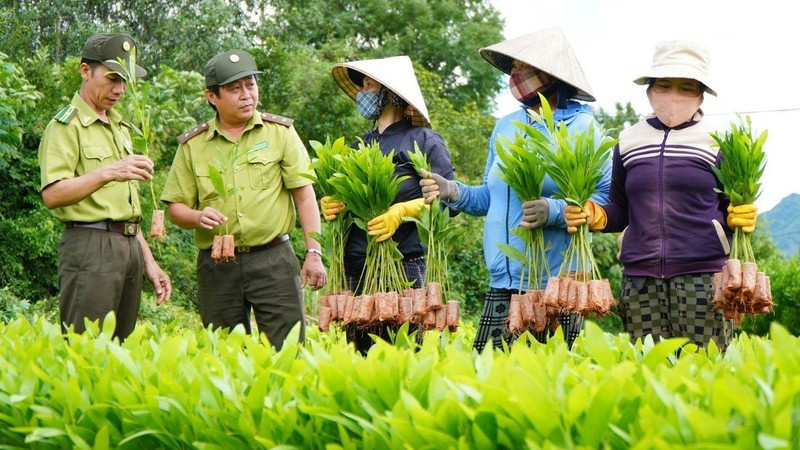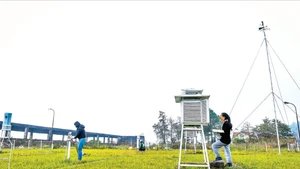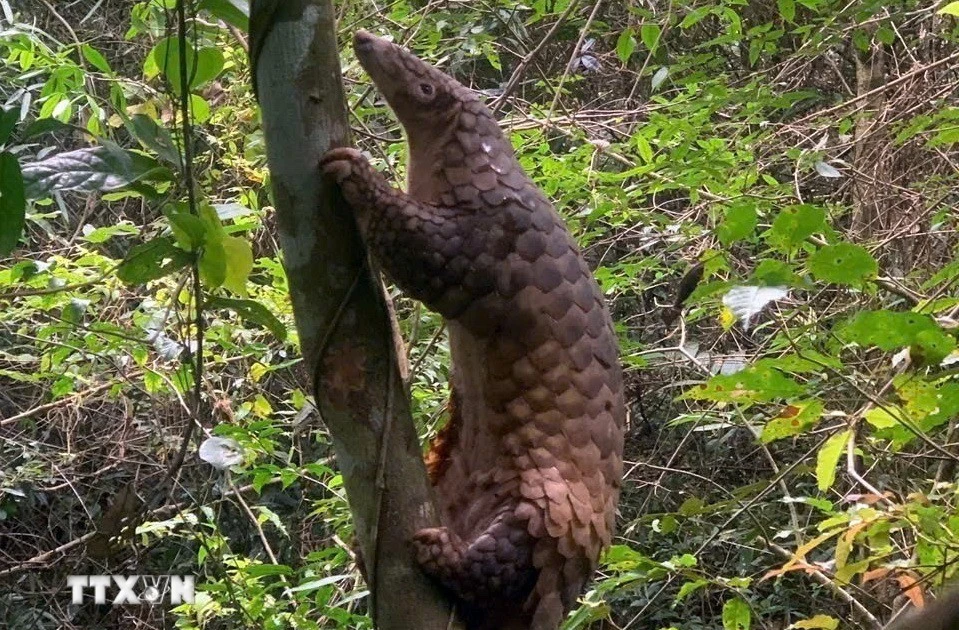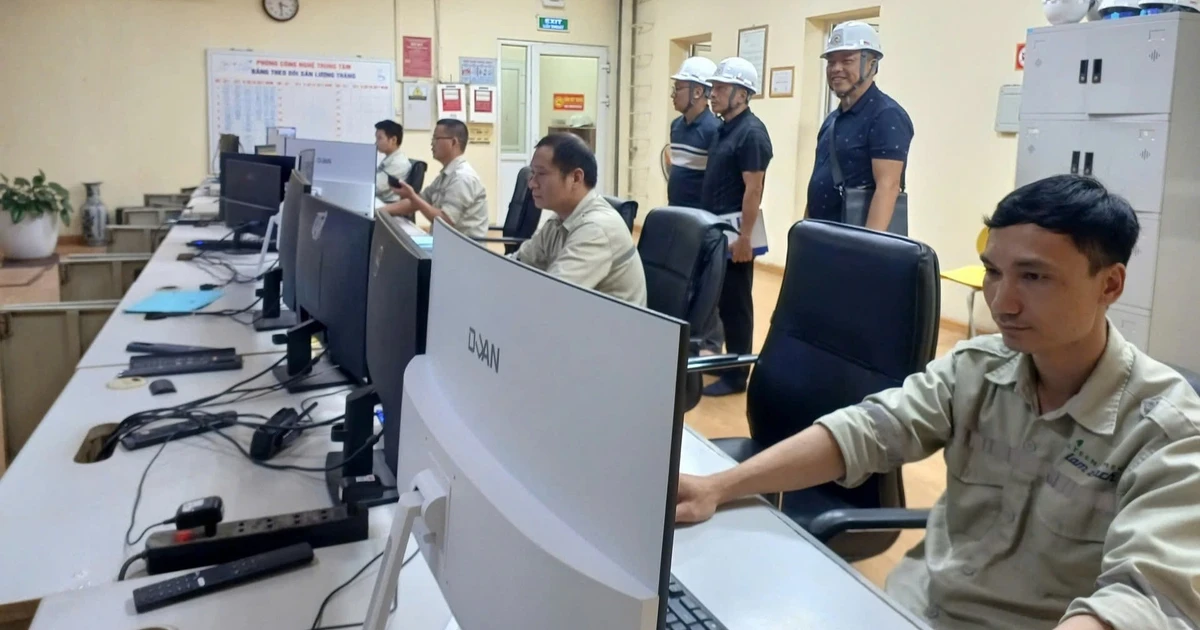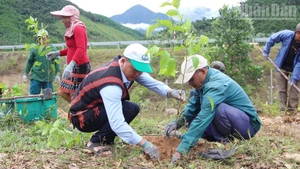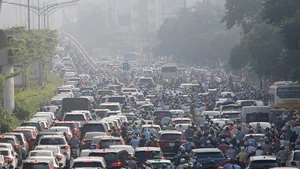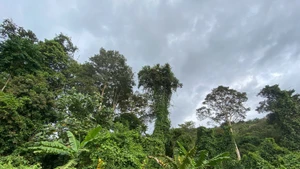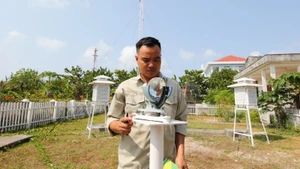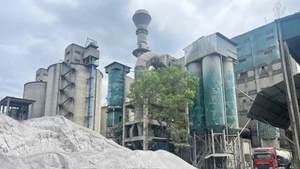Thanks to the State's new policies and laws, many households have been assigned to manage, protect, and develop forest resources from agricultural and forestry farms. This contributes to accelerating forest coverage, restoring the environment and ecosystem, and providing a stable source of income for the people.
Phu Yen is entering the timber harvest season. This year, timber prices have increased sharply. Before the Lunar New Year, factories purchased timber at 1,520,000 VND/tonne. Wood chip processing companies have built more factories to purchase wood near forest planting areas, to create more favourable conditions for forest planters to transport and trade.
Le Quoc Tinh in Xuan Quang 3 Commune has five hectares of acacia wood aged 5-7 years ready for harvest.
Owning a truck, he only hires workers to cut and load the wood onto the truck to take to the factory. In previous years, he had to transport wood a distance of 70-100 km from Dong Xuan to sell at factories outside the district or to Binh Dinh Province, but now his wood is purchased directly at factories in the district.
“As there are now many wood factories in the area, transportation costs have decreased and wood prices have increased this year. On average, forest planters can earn 80-100 million VND/ha after deducting expenses,” Tinh revealed.
According to statistics, Phu Yen Province has 253,671.95 ha of forested area, including 126,974.68 ha of natural forest and 126,697.27 ha of planted forest (including 3,012.19 ha of rubber forest).
The average area of economic forest is 3,500 ha/year, with a yield of more than 300,000 m3/year. If the selling price of wood remains stable, forest planters in Phu Yen earn a revenue of 3.5 trillion – 4 trillion VND each year.
The economic benefits from forest planting have changed the thinking and awareness of people in mountainous areas and ethnic minority areas. The forest planting movement is taking place everywhere, accelerating forest coverage, restoring the environment and ecosystem, and generating a stable source of income for the local people.
So Minh Thong, in Tan Thanh Village, Son Hoi Commune, Son Hoa District, said his family was allocated 2 hectares of land for forest planting according to the Government's Decree No. 168/2016/ND-CP. Recognising that forest planting brings economic efficiency, this year, he has leased an additional 4 hectares of land from other villagers to plant forests.
Similar to Thong’s family, in 2018, in Tong Binh Village, Son Hoi Commune, Son Hoa District, 15 ethnic minority households were also assigned 50 hectares of forestry land by the commune authorities and the district’s Forest Protection Management Board for forest planting.
To date, the economic forest has been harvested, providing a stable income for planters.
Phu Yen provincial authorities have stepped up efforts to remove difficulties for businesses that plant and trade in forest wood to develop the forestry economy. The province targets to increase the value of income from production forests by 1.5 times by 2025 and by 2 times/unit area by 2030 compared to 2020.
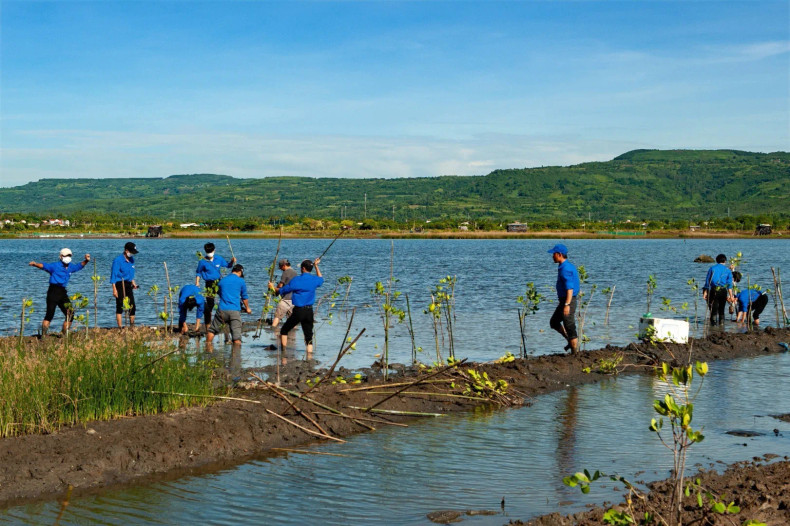 |
| Youth union members join a project on planting mangrove forest on 50ha of O Loan Lagoon in Phu Yen province. (Photo: VNA) |
In 2019, Phu Yen approved a project to plant large timber forests and non-timber forest products in 2017-2020, with orientations for 2021-2025.
The two-phase project is implemented in five protection forest areas, 2 special-use forest areas, as well as forestry companies and enterprises in the province, with a total area of more than 5,000 hectares. The first phase, conducted from 2017-2020, covered more than 3,500 hectares, and the second phase from 2021-2025 covered more than 1,400 hectares.
The Provincial People's Committee and functional agencies have paid great attention to directing and implementing the project and plan to plant large timber forests, converting small timber planting forests to large timber businesses to improve the productivity, quality, and value of forests, while creating a stable source of raw materials to supply the processing industry, thus contributing to socio-economic development, protecting the ecological environment, combating climate change, and increasing income for organisations and people.
In 2024 alone, forest owners planted more than 166 hectares of large timber forest area. To date, about 3,000 ha of large timber forests have been planted with species such as acacia hybrid, acacia mangium, padauk, dipterocarpus alatus, and hopea odorata.
Recognising the high economic benefits of forest planting, businesses, investors, and people have made bold investments in expanding the area of forest planting.
The area of planted forests and large timber planted forests in the province is increasing in quantity and quality. The value of forestry production in the province is gradually increasing. The average output of planted forest wood reaches more than 400,000 m3/year. The area of forest that has been granted sustainable forest certification from the Forest Stewardship Council has reached more than 11,524.5 ha.
In the coming time, the provincial forestry sector will adopt several solutions to foster forest planting. First, it will review the existing area of vacant land and production forests, and determine the area with suitable conditions for new planting and replanting of forests for intensive farming for large timber business.
Regarding science and technology, the province will strictly and effectively manage seed sources, prioritise the selection of forestry plant varieties, non-timber forest products, and medicinal plants with productivity and quality suitable to soil and climate conditions, and diversify plant species and products to meet domestic and export consumption needs.
Attention will also be paid to properly implementing the sustainable forest management plan, expanding its implementation and granting sustainable forest management certificates.
Regarding mechanisms and policies, the province will continue to implement the State's policies on forest protection and development, integrate related programmes, plans, schemes, and projects into the development of large timber forest planting, and create mechanisms and policies to mobilise social capital for investment in intensive forest planting and conversion of small timber production forests to large timber business.
Phu Yen Province will develop a concentrated area of large timber production forest planting of more than 1,000 ha and convert 525 hectares from small timber to large timber plantation, thus providing a source of wood materials for domestic consumption and export, increasing income for forest planters, contributing to protecting the ecological environment, adapting to climate change and mitigating natural disasters.
In 2024, the province reached a forest coverage rate of 47.5%. The locality aims to plant 1 million trees in 2025 and is focusing on developing sustainable forestry, promoting ecological agriculture, and developing high-tech applications in agriculture.
